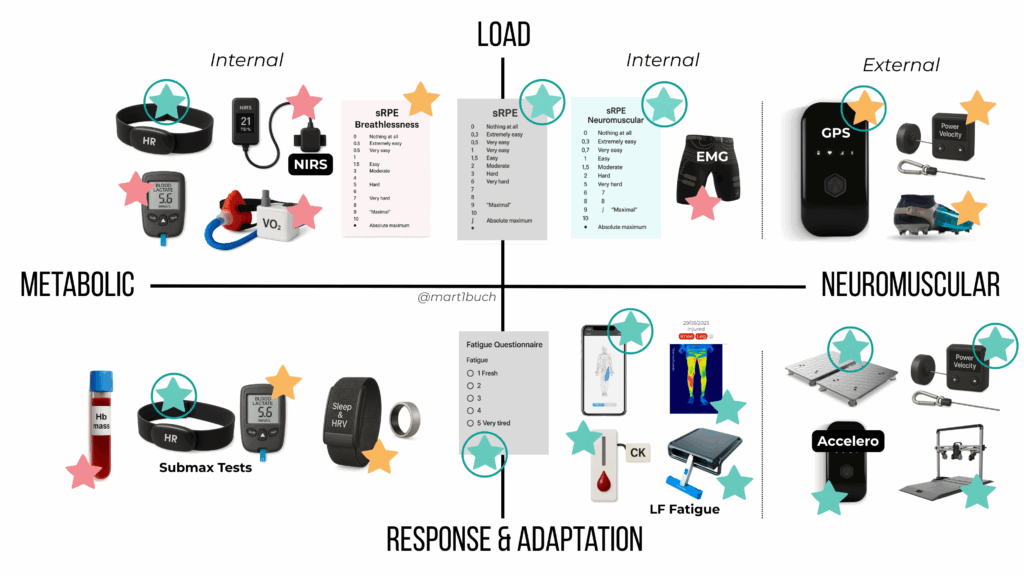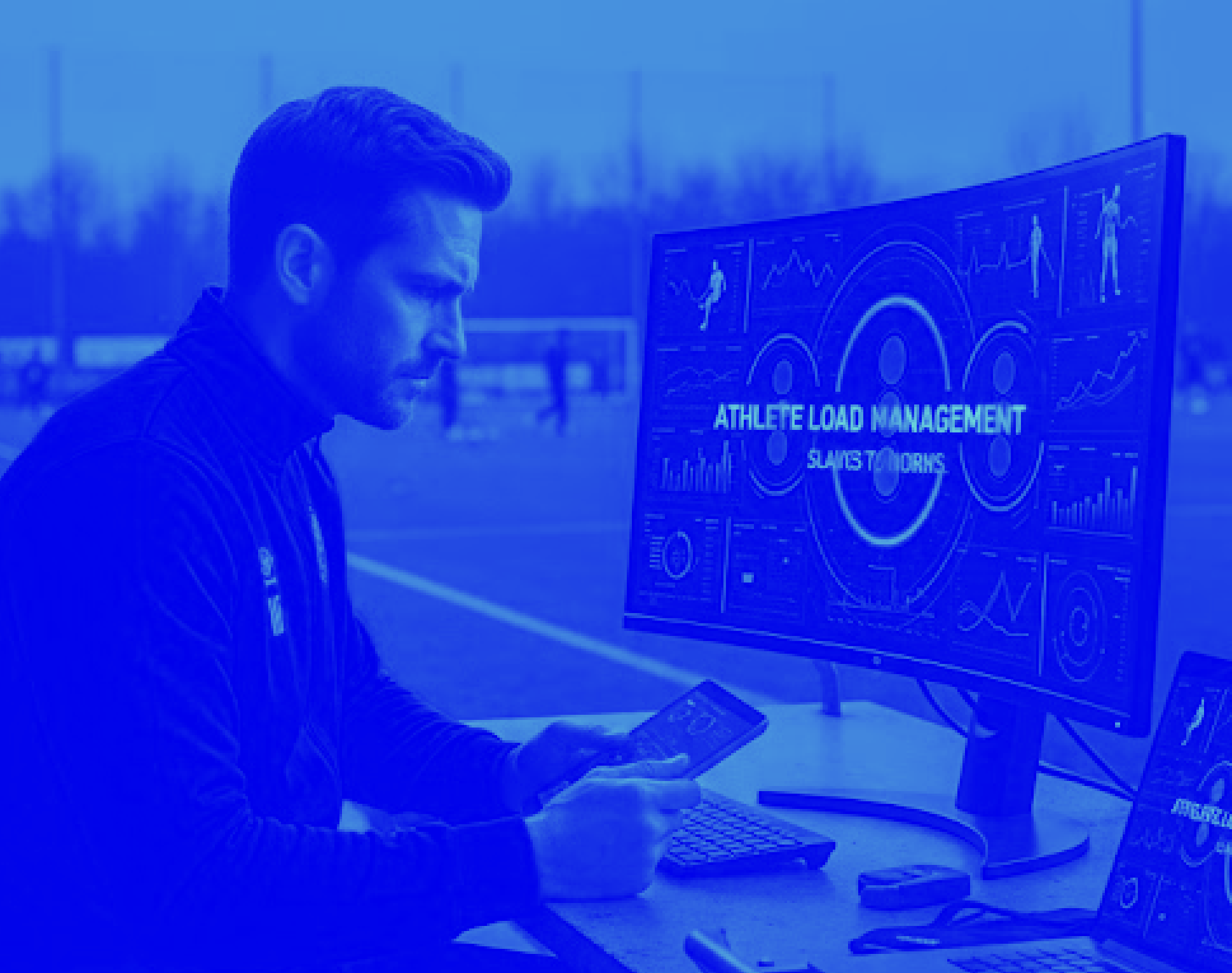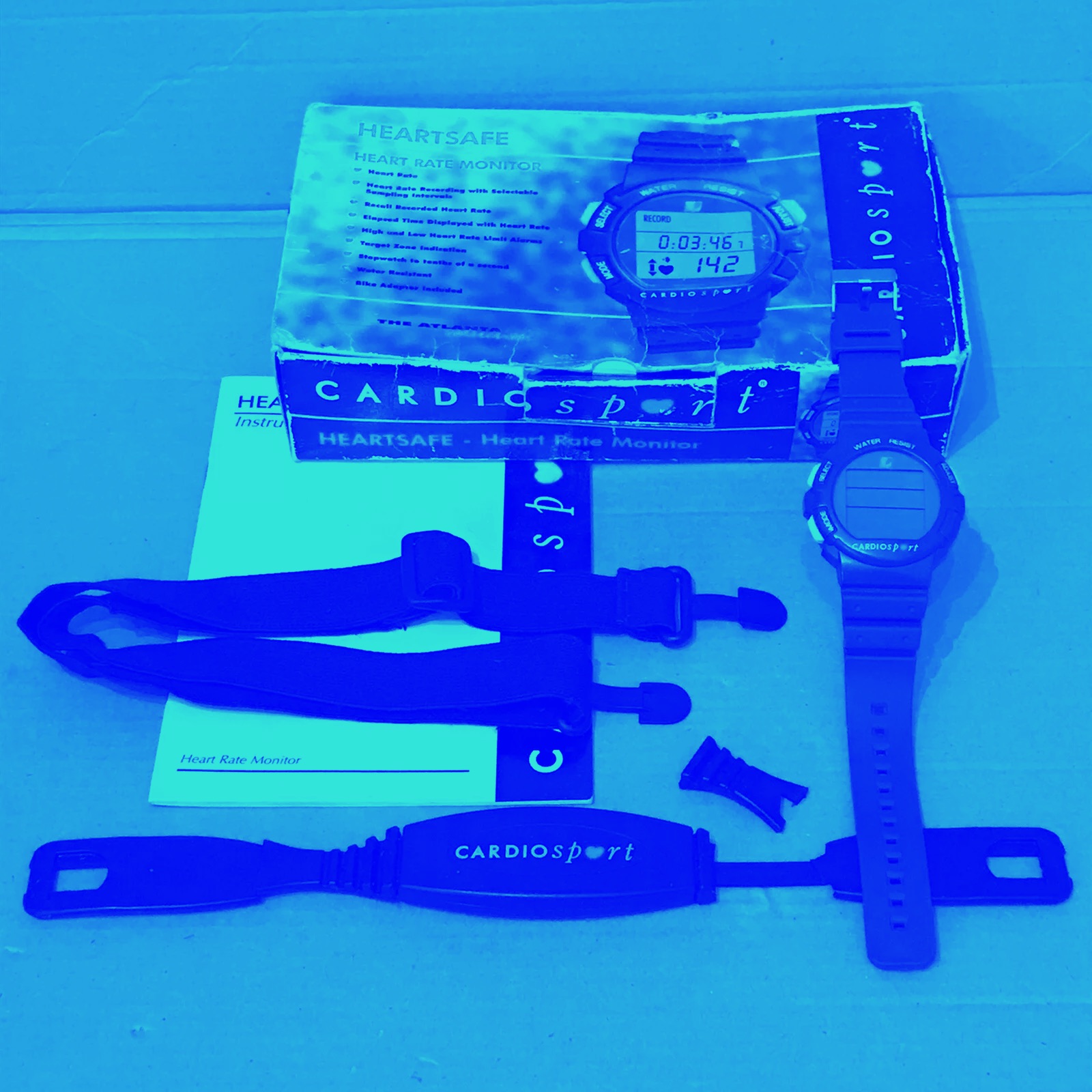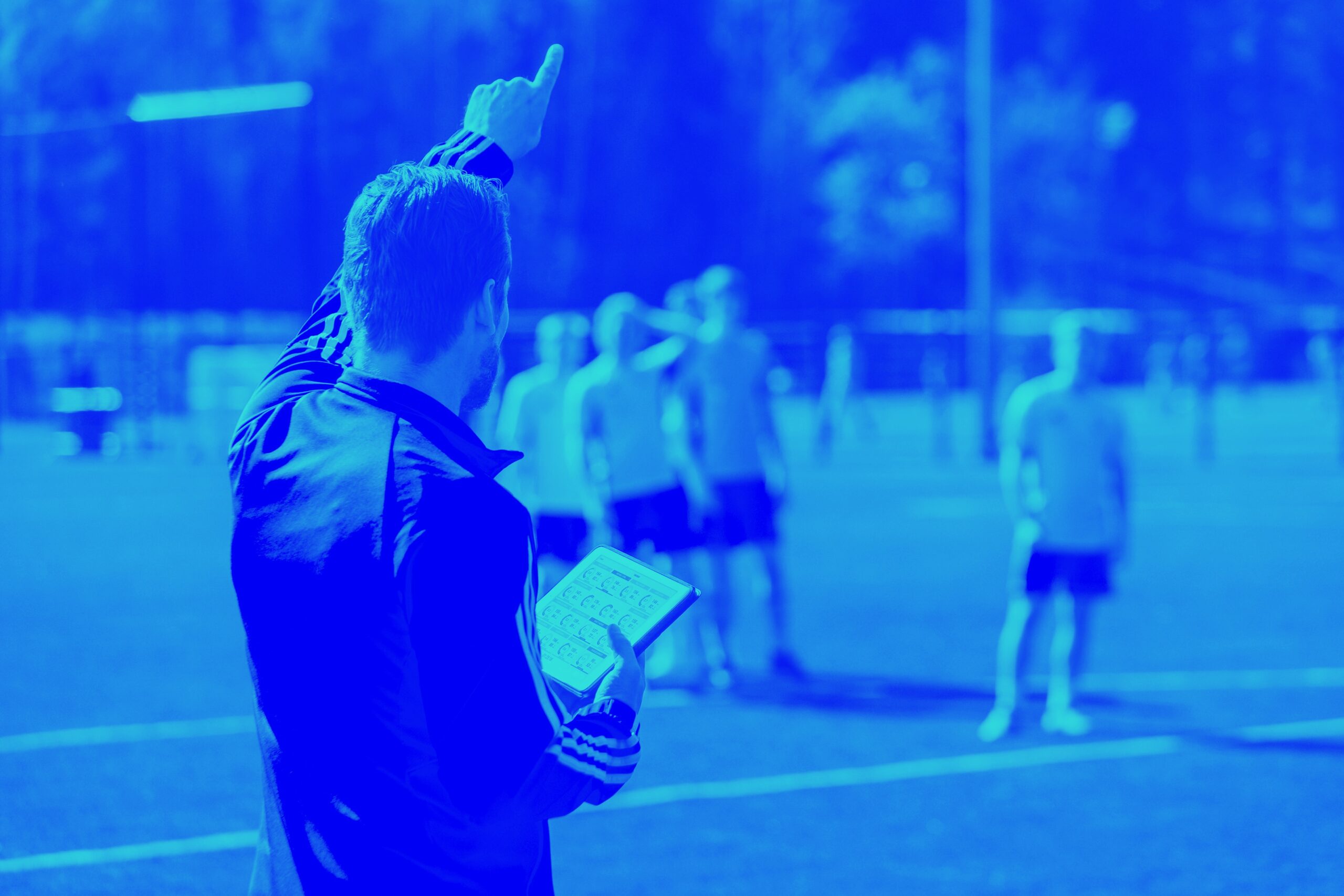Data everywhere, insight nowhere: a practical quadrant-based model for monitoring training load vs. response in elite football
Buchheit M & Hader K. Data everywhere, insight nowhere: a practical quadrant-based model for monitoring training load vs. response in elite football. Sport Performance & Science Report, #258, May 2025.
GPS or force plate? RPE or wellness scale? CK analysis or VBT? Is HRV really the best tool to monitor training load? Are we matching the right tools to the right purpose?
Data everywhere, insight nowhere: a practical quadrant-based model for monitoring training load vs. response in elite football by Martin Buchheit & Karim Hader just dropped in Sport Performance & Science Report (#258, May 2025).
Sport science today often feels like a game of “pick your favorite metric”—mixing tools, over-relying on GPS, and leaving adaptation monitoring in the dust. This “Sport Science 2.0” approach floods us with data but leaves us with little clarity.
This paper is a new edition in the Sport Science 3.0 series, bringing structure and common sense back into monitoring. The clear, quadrant-based model maps tools and metrics by function and domain—load vs. response, metabolic vs. neuromuscular. It cuts through the noise with a minimum viable setup that’s both practical and effective.
With my long-term friend and colleague Karim, we did not aim to reinvent the wheel. We just wanted to bring structure and purpose
#trainingload #response #adaptation #metabolicsystem #neuromuscularsystem #athletemonitoring #internalload #externalload #elitefootball #sportscienceframework

Figure 1. Quadrant-based representation of available monitoring tools and metrics categorized by physiological domain (metabolic vs. neuromuscular) and purpose (load vs. acute response & adaptation). The color of the stars reflects a combination of validity, practicality, and cost, based on the evaluations in Tables 2–5, ranging from green (ideal) to red (impractical and/or limited). Stars with a circle indicate the recommended practical minimum setup. Non-biological system-specific subjective ratings such as sRPE (load) and sleep, fatigue, mood, or recovery (response) are positioned between quadrants, as they likely reflect, influence or are associated with both metabolic and neuromuscular domains. While sleep is neither a direct metabolic nor neuromuscular response, it serves as both an indicator of overall wellness and a modulator of training response. Poor sleep is typically associated with increased fatigue and reduced training quality, which can ultimately affect the magnitude and direction of adaptation. ADI: athletic data innovation (https://www.adi-data.co/), CK: creatine phosphokinase, EMG: electromyography, GPS: global positioning system, Hbmass: hemoglobin mass, HR: heart rate, HRV: heart rate variability, LF Fatigue: low-frequency fatigue (combination of electrical stimulation and force sensing to measure muscle contractility and low-frequency fatigue), NIRS: near-infrared spectroscopy, sRPE: session rating of perceived exertion, SMFT: submaximal fitness testing, SSG: small-sided games, VO2: oxygen uptake.



